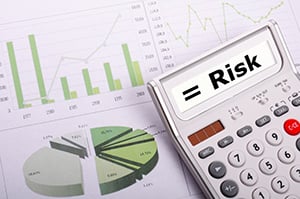Here at Commonwealth, we’ve spent a lot of time breaking down earnings results and commentary in the past few months and after the third quarter ended. For the most part, business for corporate America is strong, and the post-pandemic rebound continues with a few disruptions related to the spread of new variants. But the most common theme we’ve heard discussed in the calls we’ve participated in relates to the supply chain and the negative impact it is having on earnings and how it could continue well into 2022. And it’s not just us. According to FactSet, 342 of the S&P 500 companies made some sort of reference to the supply chain in their quarterly earnings calls. That is at a 10-year high, and it highlights how much of an issue this has become in creating bottlenecks for the economy and corporate earnings. The supply chain is critical, as it can result in demand destruction as consumers choose not to wait around to make a purchase. It can also result in higher costs. Both of these factors put and likely will continue to put downward pressure on earnings in the near term.
News
Should Investors Channel Their Inner Scrooge This Holiday Season?
For many, the holiday season is the busiest time of the year. Undoubtedly, 2021 is no exception. The world is gradually returning to “normal,” and we’ve started to resume some of the festive traditions that were missed in 2020. Personally, one of the things I enjoy most about the holidays is watching Scrooge learn valuable life lessons in the movie A Christmas Carol.
Monday Update: Consumer Prices Rise in November
There were only a few major economic data releases last week, with a focus on international trade, consumer prices, and consumer confidence. Consumer inflation came in slightly above economist expectations in November, while confidence increased by more than expected to start December. This will be a much busier week of updates, with reports scheduled on producer inflation, retail sales, home builder confidence, new home construction, and industrial production. Economists will also be closely monitoring the results from the Fed’s December meeting.
Will Omicron Derail the Recovery?
It has been going on two months since we last took a detailed look at the pandemic. Of course, a lot has happened since then. Between the winter wave of Delta, the emergence of Omicron, and the rising hospitalizations putting regional health care systems at risk again, there is a concern as to whether we are entering a third pandemic. I don’t think so, at this point. But let’s take a detailed look at where we are now and at the real question going forward—how bad will this get?
A Cynic’s Guide to ESG Investing
Over the past month, we have done a couple of posts about ESG investing, notably from my younger colleagues. I have gotten—not pushback, really—but comments to that effect both on the blog and elsewhere. The feeling seems to be, at least to some extent, that ESG is different from what prior generations, which is to say old people (which is to say me), have looked at and that somehow this represents a change.
Monthly Market Risk Update: December 2021
My colleague Sam Millette, manager, fixed income on Commonwealth’s Investment Management and Research team, has helped me put together this month’s Market Risk Update. Thanks for the assist, Sam!









 Client Relationship Specialist
Client Relationship Specialist




 Ashley has been working in the customer service field since she started her first job at age 16. For the past ten years she worked in an office setting handling accounts payable and receivable as well as some receptionist work. She is very excited to learn more about the investment field.
Ashley has been working in the customer service field since she started her first job at age 16. For the past ten years she worked in an office setting handling accounts payable and receivable as well as some receptionist work. She is very excited to learn more about the investment field. Client Relationship Specialist II
Client Relationship Specialist II Vice President of Operations and Integrator
Vice President of Operations and Integrator Wealth Advisor
Wealth Advisor Senior Client Relationship Specialist
Senior Client Relationship Specialist Senior Wealth Advisor
Senior Wealth Advisor Wealth Advisor | Director of Business Development
Wealth Advisor | Director of Business Development Wealth Advisor
Wealth Advisor Senior Wealth Advisor / Registered Principal
Senior Wealth Advisor / Registered Principal Senior Wealth Advisor / Registered Principal
Senior Wealth Advisor / Registered Principal